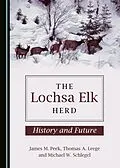Northern hemisphere ungulates occupy a variety of habitats of varying degrees of permanency. Populations that occupy drier areas must contend with different moisture patterns between years, but vegetation is relatively permanent, pending large-scale disturbances such as fires or heavy grazing. However, populations that occupy boreal forests and the moist inland coniferous forests often benefit from the major vegetation change that typically follows fire or logging. This volume records the history of an elk population that occupies these types of forests. Major fires in the 1910-1934 period created millions of acres of highly palatable shrubs that created a habitat for a burgeoning elk population. Coupled with the reduction of major predators, hunting, and other human activities in the 1930s and 1940s, the elk herd expanded to levels that are unlikely to be reached again and may never have occurred before. This pattern has occurred in many forests across the Holarctic hemisphere. Efforts to retain elk and other species including moose in these forests will have to be coordinated with other activities including logging and fire. Elk must be recognized as being products of forest disturbance.
Titel
Lochsa Elk Herd
Untertitel
History and Future
EAN
9781527549814
Format
E-Book (pdf)
Hersteller
Veröffentlichung
23.04.2020
Digitaler Kopierschutz
Adobe-DRM
Anzahl Seiten
206
Unerwartete Verzögerung
Ups, ein Fehler ist aufgetreten. Bitte versuchen Sie es später noch einmal.
